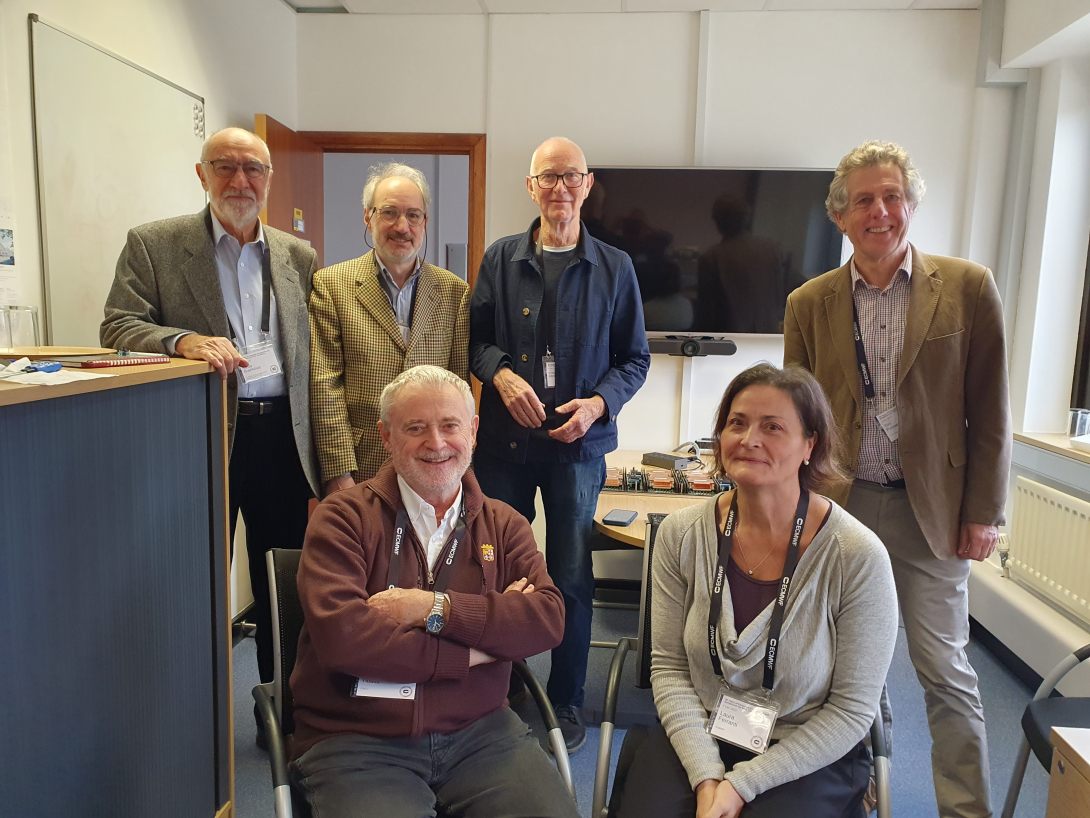| ← prev Evaluation of ensemble forecasts |
Contents |
next → How ensemble forecasts enhance the energy sector |

Laura Ferranti
ECMWF
In July 1987, I started a two-year EU grant at ECMWF. I was welcomed by Tim who introduced me to the members of my section: Diagnostic and Predictability. After coffee, Tim presented his view about my research project, discussing model systematic errors, limits of predictability, low frequency variability modes and tropical-extratropical interactions. I was daunted by the number of things I didn’t know and started to wonder whether I was taking on an impossible challenge.
Working with Tim and his team turned out to be a very enriching and rewarding experience. Soon I realized that ECMWF people were available to collaborate and facilitate my research. Tim’s regular discussions were always inspiring, providing the incentive for further research activity: a new set of numerical experiments, alternative diagnostics, innovative approaches to disentangle the inter-annual and intraseasonal monsoon variability, etc. I am particularly proud of our work on the impact of the tropical-extratropical interaction on the forecast skill which, to my knowledge, was the first paper showing the implication of a realistic MJO simulation. During the 13 years working closely with him I had the privilege to interact with many outstanding scientists and I was given the great opportunity to complete my PhD working closely with two of them.
About a decade later, when the seasonal forecasting system became operational, I was asked to work in the forecast department to develop diagnostic tools and verification statistics. Even though my main tasks were not longer strictly connected to research, I had many opportunities to discuss with Tim about forecast performance, and how to communicate forecast information to the users. Collaborating with Tim was a formative experience, which left a lasting influence. I have many happy memories of those early years of my career, and I am grateful to Tim and to many other scientists in Reading for creating such a welcoming and stimulating environment.
From a wider perspective, Tim’s contribution to the development of ECMWF ensemble forecasts across time scales was instrumental. At ECMWF in the ’90s, Tim led the research on ensembles and predictability providing the foundations of seasonal and extended range ensemble forecasting. In 1994, following his comprehensive review on the prospect for seasonal forecasting prepared in collaboration with David Anderson, the ECMWF Council approved an experimental programme of seasonal prediction. The review advocated the needs of model development of ocean-atmosphere coupled systems, and emphasized the importance of using ensembles, particularly over Europe. Steady advances were made in the following years with the first European Project on “Predictions of Climate Variations on Seasonal to Interannual time scales” (PROVOST) and the development of an initialized dynamical ocean model coupled with the IFS. The ECMWF “Earth System modelling and data assimilation” of today originates from that first development of an initialized coupled system, so essential for seasonal predictions.
With the successful ECMWF predictions of the major 1997/98 El Niño, and the increasing demand for humanitarian and commercial applications, the seasonal forecasts were included in the operational production schedule. Few years later, weekly mean outlooks for up to 32 days ahead, from the extended range ensemble forecasting system, were also routinely provided to the ECMWF member state users. Extended and seasonal ensembles, in addition to the medium-range ensemble, are the necessary components for the provision of a seamless probabilistic prediction from weather to climate which is so much in demand for humanitarian disaster risk management, commercial applications and for the National Meteorological and Hydrological services. Therefore, Tim played a crucial role in paving the road to the current ECMWF capability in providing high quality probabilistic forecast from weather to climate. Well done, Tim! You left an important legacy to ECMWF and to all of us!


| ← prev Evaluation of ensemble forecasts |
↑ top | next → How ensemble forecasts enhance the energy sector |
